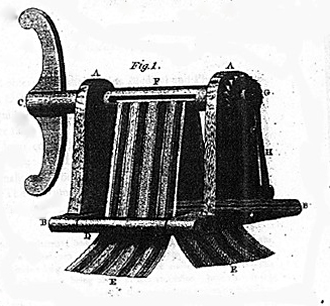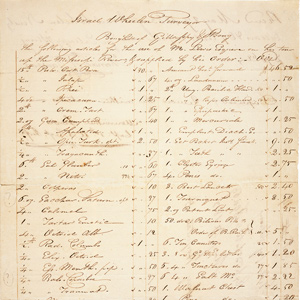Gregory Higby

Greg J. Higby earned a B. S. in Pharmacy degree from the University of Michigan in 1977. After 9 months in practice as a pharmacist, he returned to graduate school at the University of Wisconsin-Madison, receiving an M. S. in Pharmacy (1980) and a Ph.D. in Pharmacy (1984). He did his graduate work in the history of pharmacy under Glenn Sonnedecker. From 1984 to 1986, he served as a research associate at the UW, teaching the then required history of pharmacy course (Pharmacy 401) and serving as the Assistant Director of the American Institute of the History of Pharmacy. In 1986, he became the Associate Director of the Institute, which is American pharmacy’s historical society, founded at Wisconsin in 1941. In 1987, he became Acting Director of the Institute, and full-time Director in 1988. In this capacity, he serves as Editor of Pharmacy in History, the quarterly journal of the Institute. He also holds the position of Adjunct Professor at Wisconsin.
Higby’s honors include election to the International Academy of the History of Pharmacy (1991) and the Edward Kremers Award for pharmaco-historical writing (1995) for In-Service to American Pharmacy: The Professional Life of William Procter, Jr. His latest publication is American Pharmacy: A Collection of Historical Essays (2005), which he co-edited with Elaine C. Stroud.
Contributions
The Medical Supplies
by Gregory J. Higby

Physicians commonly purchased their surgical and related supplies from druggists. At Gillaspy and Strong, Whelan picked up the essentials: a pocket set of surgical instruments, a dental kit, a clyster (enema) syringe, four penile syringes, three lancets, and a very expensive tourniquet.
The Botanical Medicines
by Gregory J. Higby

The botanical medicines Lewis purchased are described—cinchona bark to treat malaria, laudanum to relieve pain, Copaiba to treat gonorrhea, for example—are described.


Dr. Rush had expressly indicated to Lewis that when one of his men showed the “sign of an approaching disease . . . take one or two of the opening pills” nicknamed “Rush’s Thunderbolts.”
The Chemical Drugs
by Gregory J. Higby

Israel Whelan purchased a wide variety of chemicals at Strong & Gillaspy. (Druggists were a prime outlet for all fine chemicals in the early 1800s.) And though some of them had other uses, most were bought to be used as medicines, including a few today that we might view as poisons.


Prior to starting, Lewis ordered 29 botanical and chemical medicines plus some related equipment and supplies. The contents of Lewis’s list have much to tell us about the medical challenges he expected to face on his journey.
Experience the Lewis and Clark Trail
The Lewis and Clark Trail Experience—our sister site at lewisandclark.travel—connects the world to people and places on the Lewis and Clark Trail.
Discover More
- The Lewis and Clark Expedition: Day by Day by Gary E. Moulton (University of Nebraska Press, 2018). The story in prose, 14 May 1804–23 September 1806.
- The Lewis and Clark Journals: An American Epic of Discovery (abridged) by Gary E. Moulton (University of Nebraska Press, 2003). Selected journal excerpts, 14 May 1804–23 September 1806.
- The Lewis and Clark Journals. by Gary E. Moulton (University of Nebraska Press, 1983–2001). The complete story in 13 volumes.

